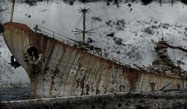Welcome to Top Documentaries and Films - this week we are showing all five episodes of Amazon Abyss, hassle free on the front page for you. When you choose more documentaries on the Navigation menu you will be asked to fill in a short survey to get free access to the documentary videos. These surveys are hassle and spam free and only take a minute to answer, then you can continue watching the videos. We recommend that you use the category links instead of the individual video links on the blog archive, as once you have finished a survey, with the category links you will get access to many videos on one page instead of just one.
Enjoy the five full length documentary videos below first - they are great and crystal clear quality!
Hunting for it in the piranha-infested waters looks like no fun at all, but some of the images we see of astonished fish along the way are brilliant.
The team are on a quest to find a fish that talks and the candiru – a parasitic catfish notorious for invading the human body. Kate heads deep into the jungle to film a rare freshwater dolphin and track down the elusive giant otter.
Mike and his team confront an armour-plated catfish, discover a 45-metre hole in the riverbed and come face to face with an anaconda.
The team has come to the very deepest part of the jungle, where streams contain the richest life, as well as danger, from four-metre caiman and the electric eel – a fish with a 600 volt shock.
In the climax of the expedition, the team prepares to explore a 100 metre chasm at the very bottom of the river. Underwater robots take cameras down the abyss and find the deep water flesh-feeding candiru.







































































